CONTEMPORARY ART JEWELS AND THE SILK ROAD

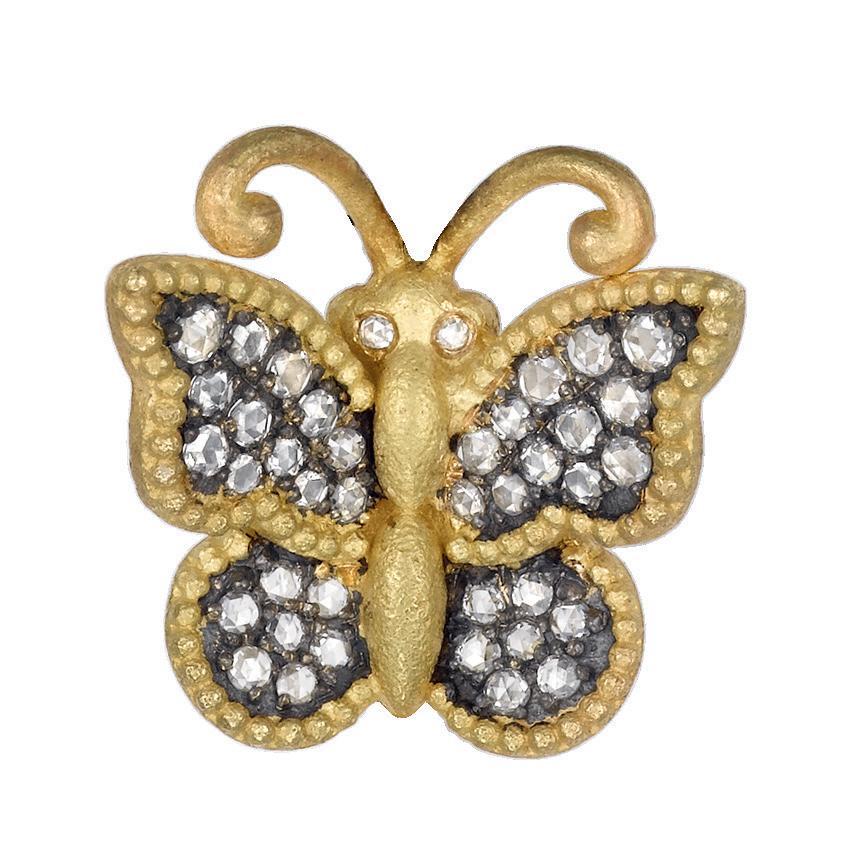




















 Juliet Weir-de La Rochefoucauld
Juliet Weir-de La Rochefoucauld



























 Juliet Weir-de La Rochefoucauld
Juliet Weir-de La Rochefoucauld




A pen and a piece of paper are probably the creator’s best companions with which one can write a good story; it is simple and has almost no boundary for the imagination. A traditional artist, such as a painter or a sculptor, can do the same trick with a stretched canvas or a handful of wet clay and sculpting tools, except that the story to be told would become more subjective and abstract in the fine art form, as it lacks linguistic clarity. Maybe a motion picture would be the most perfect medium to tell a vivid story as it combines not only the film director’s visual interpretation of a wellwritten script but also the performance of the actors and a gripping filmediting style, accompanied by touching original scores. In trying to find my favourite medium for telling an ambitious story, I have tried my hand at all the above. Finally, though, I chose something with the smallest of surface areas on which I could create and tell my stories: traditional fine jewellery making. By using jewellery to create and tell stories, I married the art of the jewel with my love for books. In particular, I have always been drawn towards anything made of wood, and all that is ‘metaphysically’ a wood element in the Taoist cosmogonic sense (literature, culture and traditional Chinese medicine are all part of the wood element, one of the five cosmic agents of change), as you will see throughout this book. I always dreamt big and hoped that I could use this tiny medium of artistic expression – the jewel – to tell the big story of Chinese material and non-material cultures.
Everyone is rooted in their own material and non-material cultures, and to successfully interpret one’s own culture to those on the outside is not easy to do. Every culture has its own rationale, rules and aesthetics. Unless one has lived long enough in a culture and is able to speak the language as fluently as the natives, then it would be hard to produce something that is culturally beautiful for that particular nation; to succeed in achieving the nuances that are specific to its people.
As the only living, pictographic language remaining in the world, the Chinese writing system is largely logosyllabic, similar to Egyptian hieroglyphs. This means that a single character represents one syllable of a spoken Chinese word and takes the form of either a physical object or an abstract notion, or indicates the way a word is pronounced.
All alphabet-based languages in the world may well see the Chinese character system as the only living mammoth in the 21st century, but that doesn’t mean it doesn’t have value. This was how I felt when I made my first series of square outline rings and tried to make a living with them. Just because they are different from the standard shape of a ring, doesn’t mean they don’t work as a ring.
To illustrate my point, recently I played a self-invented ‘Chinese Pictionary’ game with my nine-year-old daughter, over dinner. Instead of scribbling a picture or symbol to give me a hint, she verbally spoke out a series of monosyllabic sounds for me to guess the right written character. To my embarrassment, I failed abysmally. When it was my turn, I threw out five monosyllabic characters in Cantonese Chinese (one of the four main spoken varieties of Chinese) –亡 mong4, 口 hau2, 月 jyut6, 貝 bui3, 凡 faan4 – and asked my daughter to guess which was the correct corresponding character. I gave her a big hint by asking her, ‘What does an athlete desire most at the Olympic Games?’ to which she immediately answered: ‘WIN!’ However, although she was able to verbally tell me the sound or the syllable of the corresponding written character, following my very obvious hint, she didn’t have a clue how it was written: 贏 jeng4, which is a stylistic combination of the five characters/radicals mentioned above.
For a Westerner to fully comprehend how the Chinese ‘jeng4 贏’ comes into being for the Western word ‘win’, it takes a totally different mindset and way of learning. By now, you probably understand how a Chinese baby’s brain is constructed from early pre-school onwards.
So instead of me writing a hundred volumes of the chronology of Chinese material and non-material culture, and then trying to find sinologists to dedicate their whole life to translating them, I chose one of the smallest art forms to translate my culture. My point here is that an image is worth a thousand words, and a well-made, culturally rooted jewel worn by a graceful lady would be much easier to understand, enabling a story to be told and a culture or civilisation to be recognised.

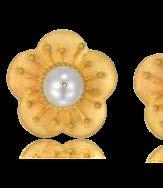
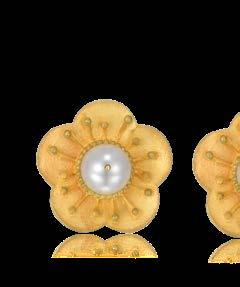


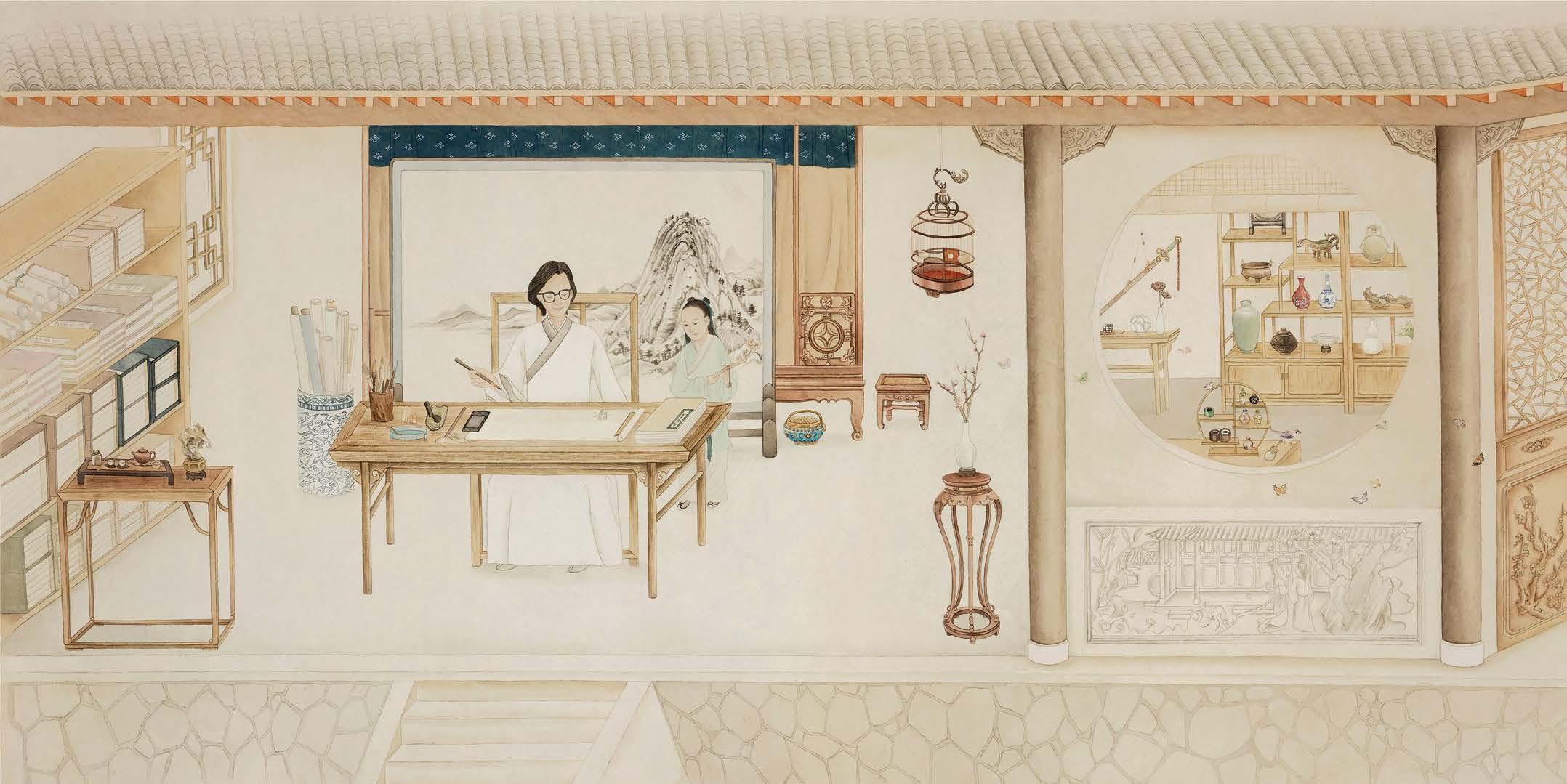

Since 2015, Yewn has been creating a series of 60 butterflies that mimic actual butterflies found in nature. With ‘Dream and Reality’ and ‘No Man’s Land Part V’, he has brought together many threads – the auspicious blessings of his fragile and beautiful butterflies, his deep understanding of wood that is so omnipresent in his work, and the symbolism found in the famous legend and allegory of spiritual transformation, ‘The Butterfly Dream’ by the late Zhou dynasty 周朝 philosopher Zhuangzi 莊子.
Yewn’s deliberate choice of 60 relates to the importance of the number 60 in Chinese astrology – a full sexagenarian cycle (gengzi 庚子) which thus represents a new beginning. With each new ‘Truth and Reality’ butterfly, a bridge is created between the scientific world and the glamorous world of art and jewellery.
In his writings, the ancient Daoist/Taoist master Zhuangzi 莊子 wonders whether he is dreaming of being a butterfly or whether he is actually a butterfly dreaming of being himself. He questions what reality is and where dreams actually begin. Are we human beings who turn into butterflies or butterflies who turn into human beings?
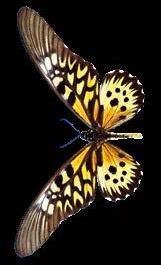
The idea for this collection comes from Zhuangzi’s musings and Yewn’s wish to create a collection of realistic butterflies rather than the poetic, stylised versions seen throughout the history of jewellery. Yewn’s butterflies are anchored in the real world and pay homage to nature’s great gift of fragile beauty. A butterfly is a symbol for an ‘accumulation of blessings’ in Chinese lore. These delicate beauties are set en tremblant – using springs, the wings quiver as they move, thus the ancient craft of jewellery-making meets the reality of the natural world. From a dream, we enter the real world of Mother Nature.
The passion of one man, Vladimir Nabokov, the famous author of such classic books of fiction as Lolita (1955) and Pale Fire (1962), was another inspiration. As a child, Nabokov hunted butterflies and studied them with the zealous fervour of a lepidopterist. His passion led him to postulate that a group of blue butterflies known as the Polyommatus blues came to the Americas from Asia via the Bering Straits in swarms over millions of years. He created a new system with which to classify them and, since his death, modern gene technology has proved him right.
PREVIOUS PAGE: Actual size of the ‘real butterflies’ in nature. Note the African Giant Swallowtail has a wingspan of 15–25cm. See following pages for details of Yewn’s realistic interpretation of his chosen butterfly species.
OPPOSITE PAGE FROM LEFT TO RIGHT: Illustration of not-to-scale ‘real butterflies’ by different artists and illustrators. Courtesy of Dreamstime Stock Photos.
The African Giant Swallowtail. Copyright Eivaisla
The Common Blue. Copyright Filip Fuxa
The Black-Veined White. Copyright Geza Farkas
The Striped Blue Crow. Copyright Prin Pattawaro
The Queen. Copyright Leerobin
The Large Tree Nymph. Copyright Montree Nanta
The Apollo. Copyright Christian Musat
The Crimson Tip. Copyright Rbiedermann
The Caper White. Copyright Peterwaters
The Sword-Grass Brown. Copyright Peterwaters.
The Monarch. Copyright Sepeliova.
The Japanese Emperor. Copyright Vlad Ivantcov.
The Peacock. Copyright Witold Krasowski.
‘Why are flowers in jewellery so faithfully imitated and yet for butterflies, they are butterflies of the imagination and not those from nature?’ Dickson Yewn
‘The Butterfly Dream’ by Zhuangzi 莊子 Chuang-Tzu (369 BCE–286 BCE)
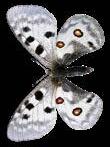



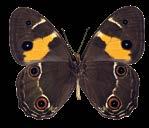
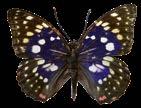
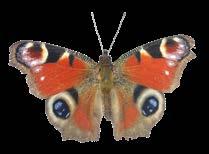


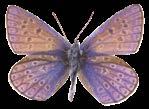


‘Once upon a time, I, Zhuangzi, dreamt I was a butterfly, fluttering hither and thither, to all intents and purposes a butterfly. I was conscious only of my happiness as a butterfly, unaware that I was Zhuangzi. Soon I awakened, and there I was, veritably myself again. Now I do not know whether I was then a man dreaming I was a butterfly, or whether I am now a butterfly, dreaming I am a man.’
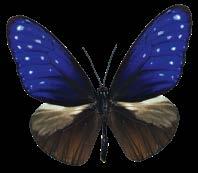
Translated by Lin Yutang 林語堂 (1895–1976) – author of the first Chinese–English dictionary in 1973.

When the Song dynasty came to an end, there had been years of turmoil caused by the Jurchen–Song wars at the beginning of the 13th century in northern China. They pitted the Jurchen Jin dynasty 金朝 (1115–1234) against the Han Chinese Song dynasty. The Mongol–Jin Wars were subsequently fought between the Mongols, led by Genghis Khan (c.1162–1227), and the Jurchen Jin. They lasted over 23 years and gave the Mongols control of Manchuria and northern China. By the last quarter of the 13th century the Han Chinese Song dynasty was in turmoil after a quick succession of emperors – Gongzong 恭宗, who came and went in the same year, 1275, then Duanzong 端宗, who reigned between 1276–1277, and finally Di Bing 帝昺 from the period 1278–1279. As a result, the Mandate of Heaven was invoked (see p47) with Kublai Khan gaining the title of Great Khan in 1260 and declaring the Yuan dynasty in 1271, which was to last until 1368. However, it was not until 1279 that Khan managed to conquer and unite the whole of China. The Song imperial family surrendered in 1276 and the final strongholds capitulated in quick succession. A decisive naval battle at Yamen 厓門 in present-day Guangdong 廣東 was won by the Mongols in March 1279. Kublai ruled as Emperor of a united China from 1279 to 1294.
Kublai Khan continued to use the systems of administration put in place by previous generations and also those of the conquered Jin dynasty, which had itself adopted the centralised system of tax collection and control over the population. The scholars or literati who had filled the positions of court officials and administrators in the past lost their positions of power, and those who had held out the longest against the invading Mongols were actively discriminated against in what used to be Southern Song territory. This meant that many of the abandoned literati retreated from public life to paint and practise the art of calligraphy using their surroundings as inspiration. Landscapes, flower and bird paintings that referred back to the Song dynasty were popular. But some artists dared to use painting to make political comments under the guise of Buddhist or Daoist beliefs. Scholars would gather ostensibly to discuss poetry and to paint, but these meetings quickly became political.
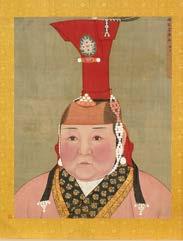
TOP LEFT: Portrait of Kublai Khan, Emperor Yuan Taizong 元太宗 (1271–1294), Yuan dynasty (1271–1368). Album leaf. By kind permission of the National Palace Museum.

BOTTOM LEFT: Yuan artist paints consort, departing for the frontier to marry Chanyu 單 于 Huhanye 呼韓邪 (Xiongnu 匈奴 Empire). In a version of the ‘Four Beauties’ legend it is said that Wang Zhaojun 王昭君 left her hometown on horseback to journey to the north. On her way she became very sad and played sad melodies on a stringed instrument, the pipa 琵琶. A flock of geese heard her playing and it is said that they forgot to flap their wings and fell out of the sky. Ever since, she has been known by her nickname ‘fallen geese’ (luoyan 落雁). By kind permission of the National Palace Museum.

TOP RIGHT & LOWER RIGHT: Portrait of Empress Yuan Shizu 元世祖 and Empress Yuan Shunzong 元順宗, Yuan dynasty (1271–1368). Album leaf. The head ornament is known as ‘an aunt crown’ (Mongolian pronunciation). The Mongol tribe was one of the largest ethnic minorities in China and the headdress, made of two pieces of birch bark and red silk was called a Gugu Guan 罟罟冠. It was popular at the inner Mongol court just as the liang batou 兩把頭 and the qitou 旗頭 were popular in the Qing dynasty under Manchurian rule. The headdress was restricted to the Mongol elite and no Han woman wore it. By kind permission of the National Palace Museum.
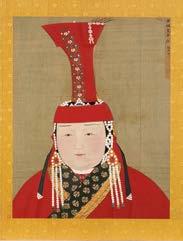
This was a period of tremendous creativity, with some of the literati becoming artisans to escape the purges, despite having previously had little regard for those who worked with their hands. In contrast, the Mongols had a high regard for the skill of craftsmen and encouraged artisanal work by exempting them from certain obligations to the state. It is thought that their admiration stems from their own lack of artisans within the Mongol culture. As a nomadic people, it wouldn’t have been possible for artisans to travel with all the materials and tools required to perform their craft. As a way to pass on their oral traditions, as well as a form of entertainment, the Mongols were great enthusiasts of the theatre and under the Yuan dynasty theatre flourished. A theatre was even built in the palace compound in the new capital Daidu 大都 (present-day Beijing 北京).


The Mongols’ traditional nomadic lifestyle was perhaps one of the reasons for their eventual downfall. There was indecision among many in their ranks about the type of life they wanted to lead – that of China’s Imperial Court or that of their forebears on the Steppes. It was only accentuated by Kublai Khan’s decision to make Beijing their capital, distancing them even further from their homeland.

The Mongols were a formidable people and, after conquering Russia in 1241, they reached Europe. However, for whatever reason, they did not stay long before returning to their homelands. On their way back, the Mongolic peoples dispersed, with some deciding to stay on in Russia and the Crimea. Setting up trading relationships with middlemen in Genoa, Pisa and Venice, they helped to complete the Silk Road, which ran from China through to Europe.
‘International trade in the early decades of the fourteenth century had become more regular, and proper merchants, not just adventurers, were making a living by frequenting the most remote market places in Beijing and Quanzhou 泉州 (Zaiton).’ Nicola di Cosmo
Slavery was rampant in China under the Mongols, which was exacerbated by collective punishment. If the head of a Chinese family was arrested or executed, all female members of his family – mother, wife and daughters – were sold into slavery, often as prostitutes. With trading routes established, many slaves found their way to Europe and it was not uncommon to find Chinese slaves in European cities in the 14th century. With the founding of the ensuing Ming dynasty, slavery was officially banned, although the laws proved greatly ineffective.
BELOW:
TOP
BOTTOM
A Tribute of a Mastiff Dog 貢獒圖, Yuan dynasty (1271–1368). By kind permission of the National Palace Museum. RIGHT: Kublai Khan Hunting by Liu Guandao 劉貫道, Yuan dynasty (1271–1368). Hanging scroll, ink and colours on silk. The figure wearing a red coat in the centre on a black horse is probably Kublai Khan. By kind permission of National Palace Museum. RIGHT: Painting of two horses by Zhao Mengfu 趙孟頫. Yuan dynasty (1271–1368). Scroll. By kind permission of the National Palace Museum.


Background: Detail from Peach Blossom, Fishing Boat 桃花漁艇圖冊 by Wang Hui 王翬 (1632–1717), Qing dynasty (1644–1911). This work illustrates the lines from Tao Qian’s 陶潛 (also known as Tao Yuanming 陶淵 明) prose poem The Peach Blossom Spring 桃花源記, which tells of how the fisherman stumbled upon Spring. By kind permission of the National Palace Museum.

A trio of Floral Lattice rings – from left to right:
Floral Fangsheng 方勝 Lattice Peach Blossom ring – diamond, black diamond, black rhodium-plated gold, yellow gold.
Floral Fangsheng Lattice Chrysanthemum and Snail ring – diamond, black diamond, black rhodiumplated gold, yellow gold.
Floral Fangsheng Lattice Lily Pad and Frog ring –diamond, jadeite, black diamond, black rhodiumplated gold, yellow gold. The frog (wa 蛙) is a symbol of fertility; it has the same pronunciation as the word for baby (wa 娃).

ABOVE: Imperial Rites of Sericulture, scroll 3: Picking Mulberry Leaves 清院本親蠶圖: 採桑 by court artists and Giuseppe Castiglione (Lang Shining 郎世寧, 1688–1766), Qianlong period (1735–1796), Qing dynasty. By kind permission of the National Palace Museum.
RIGHT: Imperial Rites of Sericulture, scroll 4: Offering Cocoons 清院本親蠶圖: 獻繭 by court artists and Giuseppe Castiglione, Qing dynasty. The Imperial Rites of Sericulture refer to an ancient set of rituals in traditional China dating back to the Zhou dynasty (c.1050–256 BCE), conducted by the empress and palace ladies in spring to commence the making of silk but which became obsolete. However, in 1742, during Emperor Qianlong’s reign, the rites were revived and an altar to the goddess of silkworms was ordered to be constructed in the Western Gardens. Finished in 1744, a grand ceremony honouring the Imperial Rites of Sericulture was led by Empress Xiaoxianchun 孝賢 with various court consorts and princesses. It was held annually thereafter. When Empress Xiaoxianchun died in 1748, Emperor Qianlong 乾隆 commissioned Giuseppe Castiglione to work alongside other court painters to paint this set of four handscrolls: Calling at the Altar; Sacrifices at the Altar Picking Mulberry Leaves; and Offering Cocoons, to commemorate Qianlong’s great attachment to the empress and to commemorate her gentle personality. It is said that Empress Xiaoxianchun was admired by all and took her role and Confucian obligations seriously. She was frugal, spending little on ornamentation, and it is said that she wore artificial flowers in her hair rather than expensive jewellery. By kind permission of the National Palace Museum.








Under Emperor Jingtai 景泰, it seems that China gained a march on the West when, after the Fall of Constantinople in 1453, a number of skilled artisans in this technique reached the country. Accordingly, cloisonné works of art from this period of the Ming dynasty 明朝 are considered some of the best. At first, large heavy bronze vessels were used, with finer copper wares introduced at a later date. Most Chinese cloisonné enamel has a blue or turquoise-blue background and, as mentioned earlier, was famously named Jingtailan 景泰 藍 (Jingtai blue), which literally means ‘blue of the reign of the Emperor’. The ‘cloisons’ (compartments) were created by using copper filigree bands that were soldered into place before the enamel was added. The ‘cloisons’ also had another important job – to create an elaborate pattern that was seen in the enamelled composition of the work of art. The enamel powder (or paste)-filled ‘cloisons’ were fired in a kiln and the process was then repeated at least twice due to enamel shrinkage. The enamel would then be sanded and polished until the metal ‘cloisons’ shined and were level with the polished enamel. Frequently, the metal surface would then be gilded.
The 16th century was a turning point in the development of cloisonné. Designs became more elaborate with many variations and styles. The enamel colours used in the Ming dynasty were red, purple, yellow, green, black, cobalt blue and turquoise, each derived from using metal oxides.⁵ The popular blue background of the Ming period had a lot to do with trade and China’s connections with Persia (Europe was only a small fraction of China’s overseas trade at the time).
Persia had a definite preference for blue and, later, during the Qing 清 period, lighter turquoise backgrounds.This colour difference was accompanied by a certain number of pock marks in the enamel resulting from escaping gases in the firing process and helped to distinguish Ming 明 cloisonné from Qing cloisonné works of art.
According to the renowned Hong Kong collector Coobie Chui, other reasons for the difference in blue background colours include the changing of the glass paste formulas and the firing process whereby the heating of the ‘cloison’ metal affected the colour of the enamel.⁶
With new exchanges between China and the West, there was an influx of Jesuit missionaries and they brought with them skills that were to have a deep influence on the works of art to be found in the Imperial Palace.
ABOVE: Cloisonné Pine and Bamboo cuff links – blue sapphire, tsavorite garnet, black rhodium-plated gold, yellow gold. Note the fretwork decoration on the cufflink batons. The fretwork (meander) pattern means endless wisdom and luck. It therefore stands for infinity and longevity in Chinese decorative art. The pattern of the character huí 回 has no beginning or end.


LEFT: Cloisonné Camellia Blossom ring – sapphire, diamond, black rhodium-plated gold, yellow gold. Camellia blossoms around Chinese New Year.
RIGHT: Jingtai cloisonné enamel plum-blossom shaped (meiping 梅瓶) vase, Ming dynasty (1368–1644) – bronze gilt, blue enamel background with red and blue chrysanthemum flowers, lotus flower and cloud pattern decoration. Butterflies, dragonflies and white cranes also decorate the bottle.
By kind permission of the National Palace Museum.
‘Jesuit and Chinese painters collaborated by dividing responsibilities: the faces of members of the imperial family were executed by Western masters, while surroundings and landscapes were the responsibility of Chinese court painters’.⁷


The reign of Emperor Qianlong 乾隆 is regarded as the peak of the Qing 清 dynasty (1644–1911), spanning a large part of the 18th century. Works of art from his reign are regarded as some of the best examples of the Qing dynasty 清朝. The emperor himself is regarded as one of the great collectors of Chinese works of art in the country’s history. The Baoteng 寶騰 sword was forged and engraved with the auspicious symbol of a dragon flying through the clouds, an allusion to its title. It was engraved on the hilt with its name, ‘Number Seventeen of the Heaven Category’. In 2008, the Baoteng1(Soaring Precious) sabre came up for sale at an auction in Hong Kong. It was a rare event.
The sabre was one of 90 sabres and 30 daggers ordered to be made by Emperor Qianlong. In ancient times, peach tree bark (jintaopi 金桃皮) was believed to ward off evil forces; accordingly, each sabre was presented in a peach tree scabbard as a talisman to protect the state from foreign invaders. They were a tribute to Emperor Qianlong’s ancestors and a means to warn his descendants to ‘ponder danger in times of peace’.
The production of the sabres took 47 years to complete. The 90 sabres were to be divided into three series: 30 for the ‘Heaven series’, 30 for the ‘Earth series’ and 30 for the ‘People series’.
LEFT: Departure Herald 出警圖 by unknown artist, 26 metres long, Ming Dynasty (1368–1644), painted during Emperor Xuande’s 宣德 reign (1426–1435). This work shows Emperor Xuande accompanied by a large entourage, including elephants,2 travelling from Beijing to the Ming dynasty tombs in order to pay respect to the emperor’s ancestors. Thirteen Ming emperors were eventually buried in the Ming tombs, which are located in present-day Changping 昌平 district3
By kind permission of the National Palace Museum.
CENTRE: Imperial Sword Jian 劍 sautoir I – jadeite, yellow sapphire, diamond, black rhodium-plated gold, white gold, yellow gold. Stylised ruyi motifs are found on the scabbard and the sword hilt pommel, as well as on the rain guard of the double-edged straight sword. The Jian 劍 was used during the last 2,500 years in China. It is known as ‘The Gentleman of Weapons’ and considered one of the four major weapons, alongside the gun 棍 (staff), qiang 槍 (spear) and dao 刀 (sabre).

RIGHT: Imperial Sword sautoir I – white jade, tsavorite garnet, brilliant- and rose-cut diamond, cabochon ruby and sapphire, black rhodium-plated gold, white gold, yellow gold. The blade is made using hammered white gold. The scabbard is decorated with lotus flowers and windswept grass. Inspired by the Qianlong Heavenly Sword series.
THIS PAGE LEFT: Imperial Sword sautoir II – white jade, tsavorite garnet, brilliant- and rose-cut diamond, cabochon ruby and sapphire, black rhodium-plated gold, white gold, yellow gold. The blade is made using hammered white gold. The scabbard is decorated with lotus flowers and windswept grass. Inspired by the Qianlong Heavenly Sword series.

RIGHT: Imperial Qianlong Heavenly Baoteng 寶騰 sword – steel blade, white jade, made in the palace workshops of the Imperial Household Department by order of Emperor Qianlong 乾隆. Fitted with a white jade handle and a steel blade inlaid with gold, silver and red copper wire. The scabbard is in lacquered peach tree bark – jintaopi 金桃 皮. Courtesy of Sotheby’s Hong Kong.













BanzhiGreyGranitethumbring–granite,sterlingsilver. BanzhiMossAgatethumbring–mossagate,yellowgold. BanzhiMottledGranitethumbring–granite,yellow gold.BanzhiBlueAgatethumbring–agate,sterlingsilver.BanzhiChatoyantQuartzthumbring–chatoyantquartz, sterlingsilver.
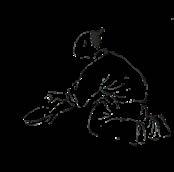
BanzhiBrownAgatethumbring–agate,sterlingsilver.
BanzhiYellowAgatethumbring–agate,sterlingsilver.

BanzhiWhiteNephritethumbring–whitenephrite, diamond,yellowgold.
BanzhiSodalitethumbring–sodalite,sterlingsilver. BanzhiRutilatedQuartzthumbring–rutilatedquartz, yellowgold.BanzhiGreenNephritethumbring–greennephrite, diamond,yellowgold.

BanzhiMottledAgatethumbring–agate,sterlingsilver. BanzhiLimeAgatethumbring–agate,sterlingsilver.
Banzhi WengeWoodthumbring–wengewood,diamond,yellowgold.BanzhiBigDipperLapisLazulithumbring–lapislazuli, diamond,yellowgold.
Banzhi Brown Adventurine Quartz thumb ring –adventurinequartz,yellowgold.BanzhiBigDipperJasperthumbring–jasper,diamond, yellowgold.



BanzhiUnakitethumbring–unakite,yellowgold.
Banzhi Black Adventurine Quartz thumb ring –adventurinequartz,sterlingsilver.


Banzhi Green Adventurine Quartz thumb ring –adventurine,sterlingsilver.Notethe‘coin’,haitangandthetortoiseshellopenlatticeworksontheinside ofeachthumbring.




To wear the jewellery of Dickson Yewn is to delve back into China's history, blended with a contemporary twist. Square rings detailing the geometric latticework found in Chinese architecture, mingle with bangles telling stories from China's great classic novels. Earrings and necklaces marry jade with plum blossom and peonies while brooches take on the form of butterflies with imitation embroidery stitching. Yewn focuses on traditional Chinese motifs, but also understands the significance of different materials. Wood, one of the five elements in Chinese philosophy, is present in most of his collections.

Along with a rich history of China's many dynasties, this new monograph of Yewn's work details the inspiration that he has drawn from the imperial courts, exploring its influence on the art of jewellery, from silks, embroidery and painting, to architecture, Chinese gardens and cloisonné enamel. Beautiful, detailed illustrations and photographs highlight Yewn's fealty to the artisanal techniques employed by his ancestors from long ago. Esteemed jewellery writer Juliet Weir-de La Rochefoucauld invites the reader to explore the deeper symbolism behind Yewn's exquisite jewellery.
